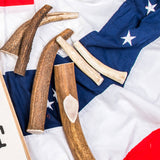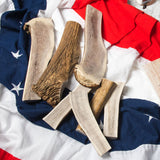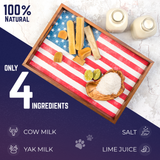Key Takeaways
- The Polish elk is one of Europe's most magnificent and culturally significant wildlife species.
- It holds deep cultural importance within Polish heritage.
- Polish elk offers unique culinary experiences for adventurous food enthusiasts.
- Tracking Polish elk in Masuria's ancient forests is a popular activity.
- Understanding Poland's elk involves separating fact from folklore.
Table of Contents
- What Is "Polish Elk"?, Defining the Species, Its Names, and Cultural Role
- Natural History: Habitat, Distribution, and the Modern-Day Range of Polish Elk
- Polish Elk in Conservation, Status, Law, and Protection
- Polish Elk Behavior and Biology, What Makes This Animal Unique
- Polish Elk in Cuisine, From Wild Game to Modern Delicacy
- Cooking with Polish Elk: Techniques, Flavor Pairings, and Home Kitchen Success
Everything You Need to Know About Polish Elk: Nature, Culture, and Culinary Legend
The polish elk represents one of Europe's most magnificent yet misunderstood wildlife species, carrying deep cultural significance in Polish heritage while offering exceptional culinary experiences for adventurous food enthusiasts. Whether you're tracking these majestic creatures through Masuria's ancient forests or savoring traditional elk sausage at your dinner table, understanding the complete story of Poland's elk requires separating fact from folklore.
For those fascinated by elk antlers and their role in Polish tradition, elk antlers are not only prized by collectors but also serve as natural dog chews. If you're seeking a durable option for your pet, consider the Extra Large (XL) Whole Elk Antler Official Dog Chew for long-lasting enjoyment.
This comprehensive guide cuts through common misconceptions about polish elk identification, explores their natural habitat and conservation status, and delivers expert insights into preparing authentic elk cuisine that honors centuries of Polish tradition.
What Is "Polish Elk"?, Defining the Species, Its Names, and Cultural Role
Terminology and Identification
Quick Answer: Is the Polish elk really an elk or a moose?
In Poland, "łoś" refers to what North Americans call moose (Alces alces), while true elk (Cervus canadensis) are called "jeleń wapiti." The confusion stems from historical naming conventions where European settlers applied familiar terms to New World species.
The scientific classification reveals the distinction clearly: Polish łoś (Alces alces) are Europe's largest deer species, standing up to 6.5 feet at the shoulder with distinctive palmate antlers. True elk or wapiti (Cervus canadensis), while present in some Polish game preserves, remain primarily North American natives with branched antlers and lighter brown coloring.
| Common Name | Polish Term | Scientific Name | Key Features |
|---|---|---|---|
| Moose (European "elk") | Łoś | Alces alces | Palmate antlers, dark coat, dewlap |
| Elk (Wapiti) | Jeleń wapiti | Cervus canadensis | Branched antlers, tan coat, bugling calls |
| Red Deer | Jeleń szlachetny | Cervus elaphus | Smaller size, reddish-brown coat |
Polish Elk in National Heritage
The polish elk holds profound symbolic meaning in regional folklore, particularly in northeastern Poland where Masurian legends speak of forest spirits taking elk form to guide lost travelers. Medieval Polish nobility prized elk hunting as the ultimate test of skill, with successful hunters earning ceremonial antler drinking horns that survive in museum collections today.
Modern Polish heraldry features the elk prominently in municipal coats of arms across Warmia-Masuria and Podlaskie voivodeships, representing wilderness preservation and regional identity. The species appears in works by Polish nature writers like Włodzimierz Korsak, who documented elk behavior in Białowieża Forest during the 1960s recovery period.
Natural History: Habitat, Distribution, and the Modern-Day Range of Polish Elk

Historical Distribution
Archaeological evidence places elk populations throughout medieval Poland's vast forest networks, from the Baltic coast to the Carpathian foothills. The species suffered dramatic decline during the 18th and 19th centuries due to intensive logging and agricultural expansion, with the last native elk documented in 1760 near Kraków.
World War II's aftermath created unexpected conservation opportunities as abandoned agricultural lands reverted to forest, while Soviet-era wildlife management introduced elk from Lithuania and Belarus beginning in the 1950s. These reintroduction efforts established today's stable breeding populations concentrated in northeastern regions.
Current Elk and Moose Ranges in Poland
Poland's elk population now exceeds 8,000 individuals distributed across five primary regions. Biebrza National Park hosts the largest concentration with approximately 1,200 elk utilizing its 59,000 hectares of wetlands and mixed forest. Masuria's lake district supports another 2,000 elk across fragmented forest patches, while Białowieża Forest maintains a smaller but genetically significant population of 300-400 individuals.
Top 5 Polish Elk Viewing Locations
- Biebrza National Park - Best viewing: May-September dawn hours
- Augustów Forest - 600+ elk, guided tours available
- Knyszyn Forest - Spring rutting displays, September-October
- Kampinos National Park - Smaller population, less crowded
- Roztocze National Park - Southern range limit, unique habitat
Environment and Adaptations
Polish elk demonstrate remarkable habitat flexibility, thriving in boreal forests, peat bogs, and agricultural edges. They require access to aquatic vegetation during summer months, consuming up to 60 pounds of water lilies, sedges, and pondweed daily. Winter survival depends on mature forest stands providing browse and thermal cover, with elk creating packed trails between feeding and bedding areas.
Polish Elk in Conservation, Status, Law, and Protection
Conservation Status
The International Union for Conservation of Nature (IUCN) lists the European elk, which Poles call "łoś", as Least Concern globally, but regional populations tell a more complex story. In Poland, moose numbers have steadily recovered since the 1950s, when fewer than 50 individuals remained. Today's population exceeds 1,800 animals, concentrated primarily in the Biebrza National Park and Masuria region. This recovery represents one of Central Europe's most successful large mammal conservation efforts.
True elk (wapiti) populations in Poland remain negligible, existing mainly in private reserves and hunting estates. These animals were historically absent from Polish forests, making their current presence largely the result of modern reintroduction programs rather than natural recovery.
Legal Protections and Hunting Regulations
Polish wildlife law strictly regulates both species under the Hunting Law Act. Moose hunting requires special permits issued by regional authorities, with quotas based on annual population surveys. The hunting season typically runs from September to January, but varies by voivodeship. Hunters must demonstrate proficiency with large game and carry specific insurance coverage.
| Region | Hunting Season | Annual Quota | Permit Requirements |
|---|---|---|---|
| Podlaskie | October 1 - December 31 | 25-35 animals | Special license + insurance |
| Warmian-Masurian | September 15 - January 15 | 40-60 animals | Regional permit required |
| Lublin | October 15 - December 15 | 5-10 animals | Limited access permits |
Penalties for illegal hunting include fines up to 50,000 PLN and potential prison sentences. Poland's regulations align closely with EU wildlife directives but maintain stricter quotas than neighboring countries like Lithuania or Belarus.
Conservation Challenges and Community Efforts
Agricultural expansion poses the primary threat to polish elk populations, as farming operations fragment traditional migration corridors. Vehicle strikes account for roughly 200 moose deaths annually, particularly along the A1 and S8 highways crossing Masuria. Climate change also affects wetland habitats crucial for summer feeding.
Local communities have responded with innovative solutions. The "Moose Crossing" project installed wildlife bridges near Augustów, reducing road mortality by 60% since 2018. Eco-tourism initiatives in Biebrza generate over 15 million PLN annually, creating economic incentives for habitat preservation. The Polish Wildlife Foundation's "Adopt an Elk" program funds GPS collar research, providing real-time migration data to highway authorities and farmers.
Polish Elk Behavior and Biology, What Makes This Animal Unique
Physical Characteristics and Size
European moose in Poland rank among the continent's largest land mammals. Adult bulls reach 1.8-2.1 meters at shoulder height and weigh 380-720 kilograms, while cows typically measure 1.6-1.8 meters and weigh 270-400 kilograms. Their massive, palmate antlers can span up to 1.6 meters and weigh 25 kilograms, significantly broader than the branched antlers of true elk.
Field identification becomes straightforward once you know the markers: moose display a distinctive dewlap (bell) hanging from their throat, long legs adapted for wetland wading, and a Roman nose profile. Their dark brown coat lightens to gray-brown in winter, while calves show reddish-brown coloring until their first molt.
For a detailed comparison of antler types and their suitability for pets, you can read deer antler vs elk antler for dogs: a comprehensive comparison.
Seasonal Behavior and Life Cycle
Polish moose follow predictable seasonal patterns tied to habitat availability. Spring migration begins in March, when animals move from winter shelter areas to summer wetlands for aquatic plant feeding. Bulls shed antlers between December and February, immediately beginning regrowth for the September rutting season.
Rutting behavior peaks in mid-September, when bulls produce distinctive bellowing calls audible up to 3 kilometers away. Dominant males may lose 15-20% of body weight during this period due to constant territorial defense. Cows give birth to 1-2 calves in late May after an 8-month gestation, with twins more common in areas with abundant food resources.
Elk Diet and Role in the Ecosystem
These massive herbivores consume 15-20 kilograms of vegetation daily, shifting their diet seasonally. Summer feeding focuses on aquatic plants like water lilies and pondweed, which provide essential sodium. Winter survival depends on woody browse, willow, aspen, and birch bark, supplemented by dried sedges and ferns.
Their ecosystem impact extends far beyond simple consumption. Moose create "browse lines" in forests, opening understory areas for smaller wildlife. Their wallowing behavior maintains seasonal wetlands, while their dung provides crucial nutrients for bog ecosystems. Scientists estimate each moose supports 15-20 bird species through habitat modification and seed dispersal.
Polish Elk in Cuisine, From Wild Game to Modern Delicacy

History of Elk Meat in Polish Cuisine
Medieval Polish nobility considered polish elk the ultimate hunting prize, reserved for royal feasts and diplomatic banquets. These grand hunting expeditions weren't mere sport, they were displays of power, skill, and connection to Poland's vast wilderness. Historical records from the 16th century describe elaborate elk hunts in the Białowieża Forest, where nobles would spend weeks tracking these magnificent creatures through dense woodlands.
The meat itself became synonymous with celebration and abundance. Unlike common game, polish elk required specialized preparation techniques passed down through generations of royal cooks. The lean, rich meat was typically slow-roasted with juniper berries, wild mushrooms, and forest herbs, creating dishes that defined Polish aristocratic cuisine for centuries.
Regional variations emerged across different Polish territories. In Masuria, elk was traditionally prepared with sour rye starter and root vegetables. Silesian cooks developed smoking techniques that preserved the meat through harsh winters, while Carpathian mountain communities created spiced elk sausages that remain cultural treasures today.
Elk Polish Sausage, Ingredients, Preparation, and Taste
Polish elk sausage represents the pinnacle of traditional charcuterie, combining lean wild game with time-honored spice blends. Authentic elk kielbasa contains 80% elk meat mixed with 20% pork fat, seasoned with garlic, black pepper, marjoram, and a secret blend that varies by region.
The preparation process demands patience and precision. Master sausage makers grind the elk meat coarsely to preserve texture, then blend it with finely minced pork fat and spices. The mixture ferments for 24-48 hours in natural casings before smoking over oak and beech wood for 6-8 hours at low temperatures.
Taste Profile: Elk sausage delivers a deep, earthy flavor with subtle gamey notes, less intense than venison but richer than beef. The lean meat creates a firm texture that holds up beautifully to grilling or slow cooking.
Best for: Traditional Polish celebrations, hearty winter meals, and anyone seeking authentic wild game flavors without overwhelming intensity.
Three authentic preparation methods showcase elk sausage at its finest. Grilled elk kielbasa takes 12-15 minutes over medium heat, turning every 3-4 minutes until the casing develops a golden-brown color. For stewing, slice the sausage into rounds and simmer with sauerkraut and potatoes for 45 minutes. Cold-smoking requires 8-12 hours at 70-80°F, creating a shelf-stable delicacy perfect for charcuterie boards.
Where to Find or Order Polish Elk Products
Authentic polish elk products require careful sourcing from reputable suppliers who prioritize ethical hunting practices and traditional preparation methods. Three standout vendors have earned recognition for quality and authenticity.
Krakus Delicatessen in Chicago specializes in imported Polish game meats, offering frozen elk sausage shipped nationwide. Their products arrive vacuum-sealed with dry ice, maintaining quality during 2-3 day shipping windows. Minimum orders start at $75, with bulk discounts available for orders over $200.
Wild Game Specialties sources elk directly from Polish hunting cooperatives, ensuring sustainable harvesting practices. They provide detailed documentation of origin and processing dates with each order. Shipping costs $25 for orders under $150, with free shipping on larger purchases.
| Supplier | Shipping Time | Minimum Order | Specialty |
|---|---|---|---|
| Krakus Delicatessen | 2-3 days | $75 | Traditional kielbasa |
| Wild Game Specialties | 3-5 days | $50 | Whole cuts |
| European Imports Co. | 1-2 days | $100 | Smoked products |
European Imports Co. offers premium smoked elk products with expedited shipping options. Their vacuum-packed sausages maintain freshness for up to 30 days refrigerated, making them ideal for special occasions or gifts.
Cooking with Polish Elk: Techniques, Flavor Pairings, and Home Kitchen Success
Preparing Elk Meat Safely and Effectively
Elk meat's lean composition demands precise temperature control to prevent dryness while ensuring food safety. The USDA recommends cooking polish elk to an internal temperature of 160°F for ground meat and 145°F for whole cuts, followed by a 3-minute rest period.
Three proven methods guarantee tender, flavorful results. Brining elk cuts in a salt-sugar solution for 4-6 hours before cooking adds moisture and enhances natural flavors. For steaks and chops, sear at high heat for 2-3 minutes per side, then finish in a 325°F oven until the desired temperature is reached.
Sous vide cooking delivers restaurant-quality results at home. Vacuum-seal elk with herbs and a touch of olive oil, then cook at 135°F for 2-4 hours depending on thickness. This method ensures even cooking throughout while maintaining the meat's natural juices and texture.
Slow braising transforms tougher elk cuts into fork-tender meals. For more inspiration and tips on elk-based recipes, check out elk meat on our blog.
If you're looking for a long-lasting chew for your dog, the Medium Whole Elk Antler Dog Chew is an excellent choice for medium breeds, while the Jumbo Whole Elk Antler Dog Chew is perfect for larger, more powerful chewers.
For those with puppies or small dogs, the Small - Split Elk Antler Dog Chew - 2 Pack offers a safe and manageable option.
To learn more about the science and ecology of moose (Alces alces), visit the Animal Diversity Web's comprehensive species account.
For additional insights into elk antler chews and their benefits, you may also enjoy our article on elk antlers.
For a deeper dive into the role of elk in European and Asian ecosystems, see this external resource on Northern Asian and European animals.
Frequently Asked Questions
What is the difference between the Polish elk (łoś) and the true elk (jeleń wapiti) found in Poland?
The Polish elk, known locally as łoś, is actually the European moose (Alces alces) characterized by its large size and broad, palmate antlers. The true elk, or jeleń wapiti (Cervus canadensis), is primarily a North American species with branched antlers and lighter brown coloring, present only in some Polish game preserves.
How does the Polish elk feature in Poland's cultural heritage and folklore?
The Polish elk holds a revered place in Poland's cultural heritage, symbolizing strength and wilderness in folklore and traditional stories. It appears in regional legends and is celebrated as a majestic emblem of the country's ancient forests, especially in Masuria.
What is the current conservation status of the Polish elk and what protections are in place?
The Polish elk is legally protected under national conservation laws, with regulated hunting seasons and habitat preservation efforts to maintain stable populations. Conservation programs focus on safeguarding Masuria's ancient forests, ensuring the species thrives in its natural environment.
What are some traditional Polish culinary uses for elk meat and how can it be prepared at home?
Elk meat is prized in Polish cuisine for its rich, gamey flavor and is often used in slow-cooked dishes like stews, sausages, and roasts. At home, it can be prepared by marinating and slow braising or roasting to tenderize the meat and highlight its distinctive taste.






